PLOT TO KILL HITLER PUT ON HOLD
The Berghof, Bavaria, Germany • July 11, 1944
Adolf Hitler had been the target of four assassination attempts before he became head of state in January 1933 and perhaps two dozen afterwards. On this date in 1944 Lt. Col. Claus von Stauffenberg arrived at the Berghof on the Obersalzberg, Hitler’s Bavarian retreat near Berchtesgaden, carrying a bomb in his briefcase. Stauffenberg was part of a resistance group in the highest levels of the Wehrmacht (German armed forces) that had been planning Hitler’s assassination since at least 1938. Because the second-most powerful man in the Third Reich, Reichsfuehrer-SS Heinrich Himmler, chief of the Gestapo (secret police) and, from 1943, Minister of the Interior, was absent that day, the plan was aborted. The plotters worried about a “civil war” breaking out between the powerful police services under Himmler and the Wehrmacht if both men could not be killed at the same time.
Four days later Stauffenberg reappeared in Rastenburg at the “Wolf’s Lair” (Wolfsschanze), Hitler’s East Prussian headquarters (now in Kętrzyn, Poland). Again the plan was nixed because Himmler was not present. Finally, on July 20, 1944, a hot and humid summer day, an exasperated Stauffenberg crossed the Rubicon and planted a powerful bomb under a marble-topped map table in a wood-frame conference room at the Wolf’s Lair. The explosion had the unintended consequence of killing thousands of people. By a quirk of furniture design, the “legs” at each end of the long table were one continuous piece of wood running widthwise from table edge to table edge; thus, the bomb blast was deflected away from its intended target standing to the other side of the single support. The explosion killed several individuals. But Hitler, his uniform in tatters, miraculously survived, sustaining an injury to his arm and eardrums. Hitler shipped his ruined uniform to his girlfriend and future wife, Eva Braun, as a memento.
The detonation was the start of Operation Valkyrie (Walkuere), the codename for the military coup that began taking shape in Berlin upon Stauffenberg’s return flight to the capital. There the conspirators briefly believed their watertight plans to kill Hitler had succeeded. At 1 a.m. the next morning, Hitler addressed the nation and the world by radio, telling listeners that his survival was a providential sign that he must surely continue in his role as Germany’s Fuehrer (leader).
The euphoria generated in the Allied camp by news of the conspirators’ bomb plot (failed though it was), mixed with the previous month’s start of Allied offensives in the West (finally!) (Normandy Landings) and East (Operation Bagration), led to a popular belief that the Third Reich was teetering on collapse from within and without. In London, the war cabinet forecast, for planning purposes, December 31, 1944, as the date hostilities would end. In Washington, the War Production Board began canceling military contracts. Unfortunately for war planners, armed forces service personnel, and noncombatants alike, the blood-spattered collapse of Hitler’s Third Reich’s came principally from forces without, and it was lamentably 45 weeks away.
![]()
German Conspirators in the Plots to Kill Adolf Hitler
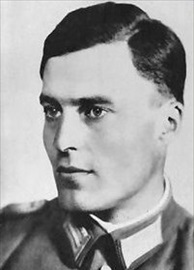 | 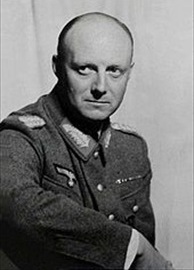 | 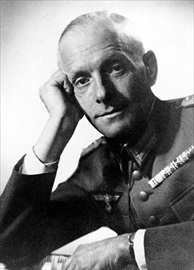 |
Left: Lt. Col. Claus von Stauffenberg (November 15, 1907–July 21, 1944) was a 36‑year-old German Army officer and aristocrat who, along with Gen. Maj. Henning von Tresckow and Gen. Maj. Hans Oster, was a leading member of the failed July 20, 1944, plot to assassinate Hitler and remove the Nazi Party from power. For his involvement Stauffenberg was shot shortly after the failed attempt known as Operation Valkyrie.
![]()
Middle: Four-star general Henning von Tresckow (January 10, 1901–July 21, 1944) helped organize resistance within the Wehrmacht against Hitler. He attempted to assassinate Hitler in March 1943, and he drafted the Valkyrie plan. On learning of the failure of the July 20 plot, he committed suicide on the Eastern Front
![]()
Right: Gen. Hans Oster (August 9, 1887–April 9, 1945) was deputy head of the Abwehr (German military intelligence) under Adm. Wilhelm Canaris and a leading figure in the German resistance movement from 1938 to 1943. Oster’s Abwehr group supplied British-made bombs to Tresckow’s group in their various bids to kill Hitler in 1943. Oster was executed on the same day Canaris was executed at Flossenbuerg prison in Bavaria.
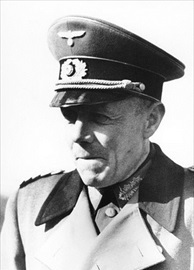 | 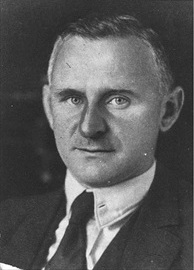 | 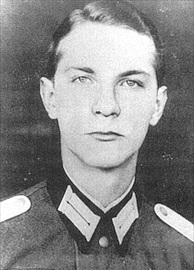 |
Left: Col. Gen. Ludwig Beck (June 29, 1880–July 20, 1944) was Chief of the German General Staff during the early years of the Nazi regime. In 1943 Beck planned two abortive attempts to kill Hitler using a bomb. In 1944 he was one of the driving forces of the July 20 plot with Stauffenberg and Carl Goerdeler. Beck was tapped to head the provisional German government that would assume power after Hitler had been killed.
![]()
Middle: Carl Friedrich Goerdeler (July 31, 1884–February 2, 1945) was a conservative politician, the ex-mayor of Leipzig. He was an executive, economist, civil servant, and opponent of the Nazi regime. Had the July 20 plot succeeded, Goerdeler would have been named chancellor in the new government.
![]()
Right: With his father’s blessing, 22-year-old Ewald-Heinrich von Kleist-Schmenzin (July 10, 1922–March 8, 2013) unsuccessfully attempted a suicidal assassination against Hitler in January 1944 at the Wolf’s Lair. After the failure of July 20 plot, he managed to cover up his resistance activities. Many of his fellow plotters, including his father, were brought before Roland Freisler’s kangaroo People’s Court in Berlin and sentenced to death.
Lead-Up to Operation Valkyrie: The Plot to Kill Hitler, July 20, 1944
![]()

 History buffs, there is good news! The Daily Chronicles of World War II is now available as an ebook for $4.99 on Amazon.com. Containing a year’s worth of dated entries from this website, the ebook brings the story of this tumultuous era to life in a compelling, authoritative, and succinct manner. Featuring inventive navigation aids, the ebook enables readers to instantly move forward or backward by month and date to different dated entries. Simple and elegant! Click
History buffs, there is good news! The Daily Chronicles of World War II is now available as an ebook for $4.99 on Amazon.com. Containing a year’s worth of dated entries from this website, the ebook brings the story of this tumultuous era to life in a compelling, authoritative, and succinct manner. Featuring inventive navigation aids, the ebook enables readers to instantly move forward or backward by month and date to different dated entries. Simple and elegant! Click 











